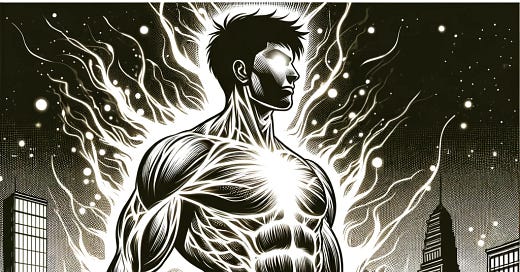Human beings are remarkable creatures. We’re well known for using large-scale cooperation and the transmission of knowledge to improve things over generations.
We also glow in the dark. We are less known for this.
Bioluminescence in humans arises mainly because of our metabolism. Our bodies are filled with cells, where lots of little chemical reactions produce energy. When sugar or fat is broken down in a cell, a lot of energy is released, helping to provide the fuel you need to do the things you do.
Some of the energy, however, is “extra”, and it ends up exciting other molecules inside the cell. This uncomfortable “excited” state can’t last forever, and the molecules “want” to release that extra energy. One way this energy is released is by way of a photon—a tiny packet of light.
I wrote about this idea a bit here:
The amount of light that comes from humans as a part of this process is very, very small—too small for even the best human eyes to detect. But hey, at least we glow in the d…
Keep reading with a 7-day free trial
Subscribe to Goatfury Writes to keep reading this post and get 7 days of free access to the full post archives.





